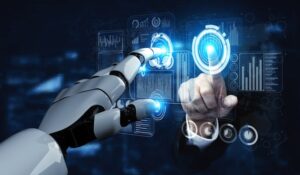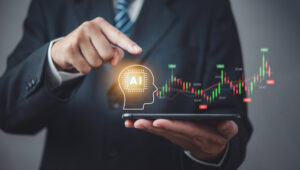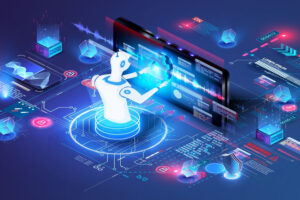In the dynamic world of digital content creation, the debate over AI video vs human-edited video is increasingly relevant. As technology advances, digital creators are exploring new ways to produce engaging content efficiently. The choice between using artificial intelligence (AI) for video editing or relying on traditional human editors is a pivotal decision that can significantly impact the quality and appeal of the final product.

The Rise of AI in Video Editing
AI technology has made significant strides in recent years, transforming industries and changing how tasks are executed. In the realm of video editing, AI offers innovative solutions that promise to enhance productivity and creativity. AI video editors can quickly analyze footage, identify key scenes, and even apply transitions and effects with a level of precision that was previously unimaginable.
Advantages of AI Video Editing
- Speed and Efficiency: AI can process large volumes of video data in a fraction of the time it would take a human editor, allowing for faster turnaround times.
- Cost-Effective: By automating repetitive tasks, AI reduces the need for extensive human labor, which can result in cost savings.
- Consistency and Precision: AI algorithms can apply consistent editing styles and precision that can be challenging for humans to maintain over long editing sessions.
Challenges of AI Video Editing
- Lack of Creativity: AI lacks the creative intuition that human editors bring to the table, often resulting in videos that may feel formulaic.
- Limited Adaptability: While AI excels at specific tasks, it struggles with adapting to unique or unexpected scenarios that require human judgment.
The Art of Human-Edited Videos
Human-edited videos have long been the gold standard in the industry. Skilled editors bring a personal touch to their work, infusing videos with creativity and emotion. The ability to understand context, nuance, and audience preferences allows human editors to craft videos that resonate deeply with viewers.
Strengths of Human Editors
- Creative Vision: Human editors possess the ability to think creatively and make artistic choices that elevate the storytelling quality of a video.
- Emotional Connection: Videos edited by humans can evoke emotions and connect with audiences on a personal level, something AI struggles to achieve.
- Customization and Adaptability: Human editors can tailor videos to specific audiences, ensuring that each project is unique and impactful.
Limitations of Human Editing
- Time-Consuming: Unlike AI, human editing requires considerable time and effort to produce high-quality results.
- Higher Costs: Employing skilled editors can be expensive, especially for large-scale projects.
Finding the Balance
For digital creators, the optimal solution often lies in combining the strengths of both AI and human editors. By leveraging AI for routine tasks and human editors for creative input, creators can produce high-quality videos efficiently. This hybrid approach harnesses the power of technology while maintaining the artistry that captivates audiences.
AI Video vs Human-Edited Video: A Comparison
| Criteria | AI Video Editing | Human-Edited Video |
|---|---|---|
| Speed | Fast | Slower |
| Cost | Lower | Higher |
| Creativity | Limited | High |
| Consistency | Consistent | Varies |
| Personalization | Basic | Advanced |
Future of Video Editing
As AI technology continues to evolve, its role in video editing is likely to expand. We can anticipate AI becoming more adept at understanding creative nuances and offering more personalized editing options. In turn, human editors will continue to refine their skills, focusing on the creative aspects that machines cannot replicate.
To learn more about AI in video personalization, visit our comprehensive guide on the topic.
The Role of AI in Future Video Marketing
AI’s potential to revolutionize video marketing is immense. By automating routine tasks, AI frees up time for marketers to focus on strategy and content creation. This shift allows for more dynamic and engaging marketing campaigns that effectively capture audience attention.
Discover the top AI tools for video marketers to stay ahead in the industry.
Conclusion
The debate over AI video vs human-edited video is complex and multifaceted. Both approaches offer unique advantages and face distinct challenges. By understanding the strengths and limitations of each, digital creators can make informed decisions that align with their goals and audience expectations. Embracing a hybrid model that incorporates both AI and human input may be the key to producing exceptional video content in the digital age.
For further insights, visit AI graphic design innovations.

FAQs
What is AI video editing?
AI video editing involves using artificial intelligence algorithms to automate tasks such as cutting, splicing, and applying effects to video footage.
Can AI replace human video editors?
While AI can handle routine tasks, it lacks the creativity and emotional understanding that human editors provide. A combination of both is often the most effective approach.
How do I choose between AI and human editing?
The choice depends on your specific needs, budget, and the type of project. For quick, cost-effective edits, AI is suitable. For creative projects requiring a personal touch, human editing is preferable.







